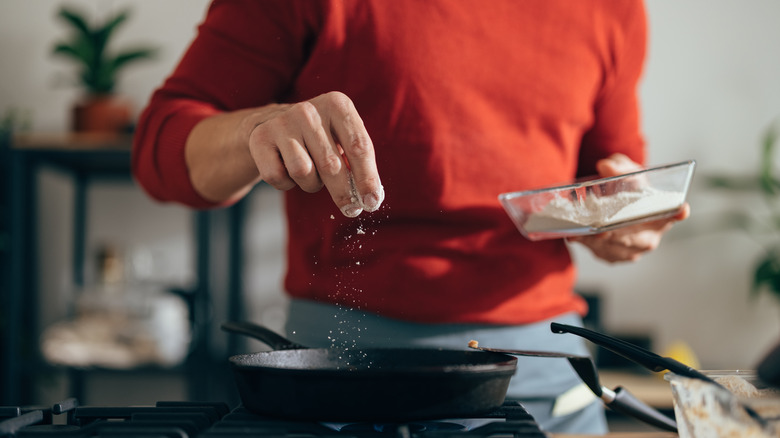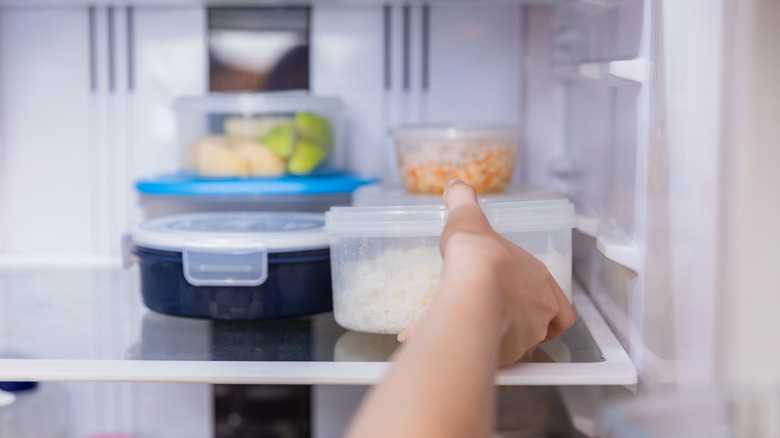The Salting Tip To Remember For Better Leftovers
Allow us to set the unfortunate scene: You made a killer dinner last night. Not tooting your own horn, but you really outdid yourself here. Now, it's the next day, and you've been stoked to dig into those leftovers for hours. But, you take a bite and... it's "blah." What gives? Rest assured, you didn't misremember your own culinary prowess. If your leftovers taste bland, there's a scientific reason why — and it's all about the salt.
Sodium chloride makes up 0.4% of the total weight of a human body. Salt keeps the blood pumping, keeps the nervous system transmitting messages, and keeps sea turtles swimming in the ocean. The point is that salt is a huge deal, and foodies have been relying on its gastronomic power since the beginning of everything.
However, it can forsake your leftovers during their tenure in the fridge. Over time, food absorbs the salt as it sits, which makes for a bland flavor rather than a salty one. Before you warm up yesterday's meal, hit it with an extra generous pinch of salt to compensate. (Your palate will thank you.)
In a pinch, add a pinch
To get the most out of your salt, stick with an all-purpose kosher sea salt or finishing salt flakes. Table salt can quickly over- or under-season your dish, making the flavor even worse instead of restoring or elevating it. Order matters here, as well. Depending on the dish, you might salt your leftovers before reheating them. Or, you might add salt post-reheat to finish. On the same note, take care not to overdo it. You can always add more salt later, but you can't subtract it. Some foods (like plainer mashed potatoes or casseroles) might need a lot of next-day salting, while others might need just a pinch; adjust to taste as necessary.
Leftovers can be an especially prominent piece of furniture during the holiday season when stacks of Thanksgiving dishes and Seder latkes crowd the fridge. Or, maybe you just want to relive that chicken parm from your favorite restaurant one more time. A little extra salt can be a huge help. Still, it's worth noting that between starch molecule retrogradation and lipid oxidization, your leftovers are up against a lot during the chilling process. To keep your leftovers looking good, invest in high-quality airtight containers and reheat food on the stove rather than in the microwave. According to the USDA, as a general rule, leftovers will keep for three or four days in the fridge or for three or four months in the freezer before they start to turn.

